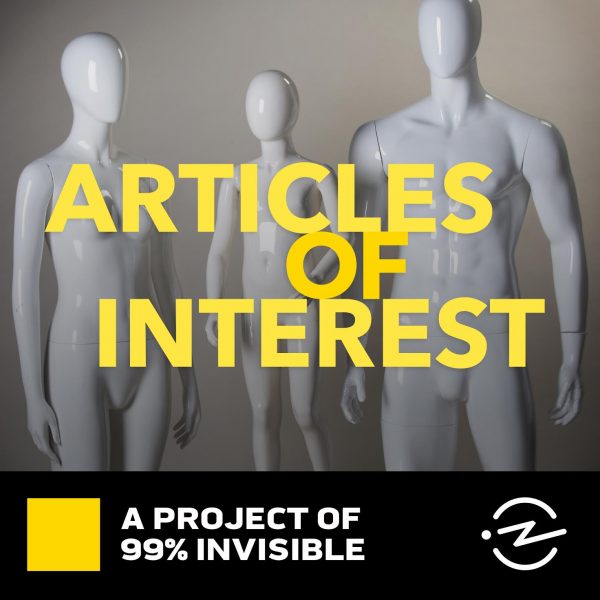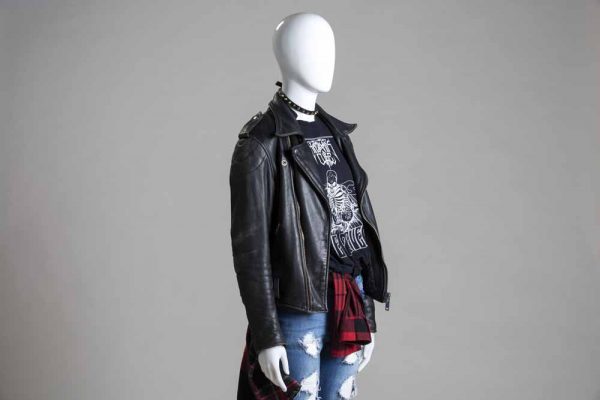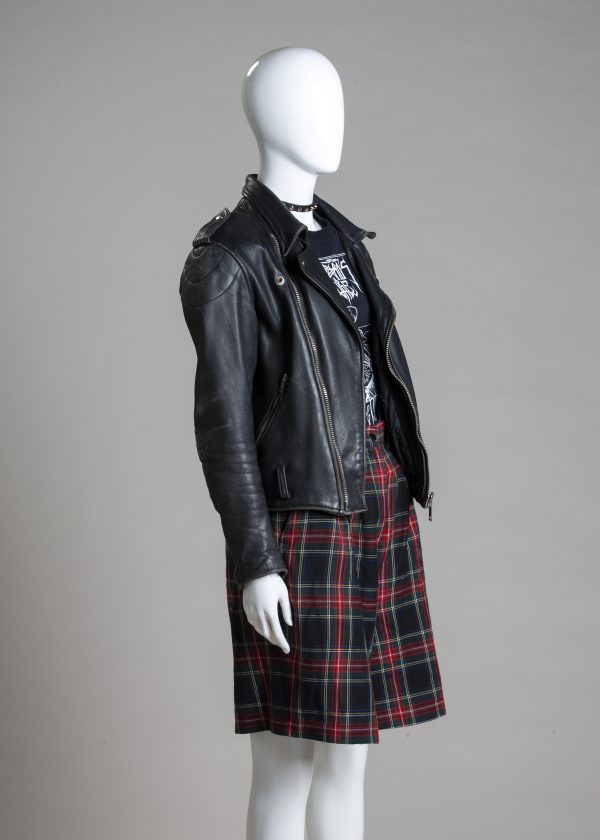Lumberjacks wore plaid. Punks wore plaid mini skirts. The Beach Boys used to be called the Pendletones, and they wore plaid with their surfboards. Lots of different groups have adopted the pattern over the course of the 20th century, but if we want to explore how this pattern proliferated, we’ve got to go to Scotland.
Articles of Interest is a show about what we wear; a six-part series within 99% Invisible, looking at clothing. Episodes will be released on Tuesdays and Fridays from September 25th through October 12th.
For Plaid, Avery Trufelman spoke with her friend Anna Pulley; Peter Macdonald, historian at the Scottish Tartans Authority; Jonathan Faiers, author of the book Tartan; Dee Williams, who works at the National Records of Scotland.






Comments (17)
Share
I love the song that plays right before the credits. What is it?
What was the name of the song that played at the very end? Lyrics: “there’s a portrait, painted on the things we love”. Where can I find this?
I’m looking for the name and artist for the song that plays at the end of this episode that starts with “a pocket”.
Unfortunately, it is the theme song of the show and is not available outside of 99pi. From the credits, the writer is one Sasami Ashworth and is currently making songs on her own. Go check her out!
Full song is now embedded on 99pi.org/aoi !
I would like to add myself to the list of people looking for that song right before the credits! Let us know!!!
I’m looking for the same exact song everyone else is. I would love to hear the whole thing.
Full song is now embedded on 99pi.org/aoi !
A quick trip to a tartan designer reveals that each band has to be an even number of threads, and 200 threads is too many to make good kilt fabric. But I think my first attempt looks really good, and I want a flannel shirt in it, even though the repeats are like 8.8 inches.
I loved this episode.
Plaid fans might like this little bit of silliness: “Is plaid really warmer than other fabrics?” It’s from Here’s to Warmth!, a 1954 pamphlet from the Plaid Manufacturers Council. The link’s behind my name. N.B.: the pamphlet and the council are figments of my imagination.
It’s interesting how many people in the US identify plaid with working class. It likely depends on age and region.
I love 99pi so much, which is why this particular series is so frustrating to me. If you’d actually talked to people who know about textiles, it could have been great! People who specialize in Scottish tartans are all fine and well, but the fact that they snowed you with the bus-tour-guide, bush-league lie about plaid being a Scottish invention is astonishing to me.
If you had talked to a textile historian without a nationalistic axe to grind, or, say, an actual weaver, you would have learned that plaid is one of the oldest, most widespread designs in woven cloth. It is almost an inevitable part of weaving. Stripes are the first stage; if you know you don’t have enough of any one color of weft yarn to finish the warp on your loom, it’s natural to divide it up into more or less consistent repeats rather than one big block of color A and one big block of color B. Plaids are a hop skip and a jump away–they’re what happens when you also don’t have enough of any one warp yarn to make your whole warp one color. They can even be accidental–if you’re winding a warp from various small balls of yarn, you may well end up with a stripey warp, and then if you just sort of alternate random small balls of yarn when filling your shuttle with weft yarn, you’ll also create stripes in the weft, at which point…hey, look, plaid!
Obviously there are infinite refinements and variations to this process. One of the most fascinating things I’ve ever read was about a textile historian who was trying to recreate a prehistoric textile from a fragment that didn’t extend to an edge, so she didn’t know which threads were warp and which were weft. So she just picked one, to try to see what it would look like, and was confused by the fact that there was no reliable pattern to the number of ends (warp threads) in each color. Like, it would be 12 of one, 4 of another, then 11 of the first, 5 of the second, etc. Finally, she started counting the ends of what she’d surmised to be the weft, and found out they were exactly 12/4/12/4/etc (made up numbers because I can’t remember how to find the article). So basically, that was the warp, and then in the weft, they did it by eye until each horizontal stripe was the proper width to match the vertical ones. But you’d never know that except by trying it!
Anyway…long story short, I truly do love the show, I love your passion, I love your fascinating topics, this is just one where I happen to know enough to get myself in trouble!
I love that song very much. Really wish I could buy the whole thing.
I would love to pay anyone who holds the rights to this song up to 10$. Please make it available!
Full song is now embedded on 99pi.org/aoi !
Dont the Maasai people robes are plaid
I have to agree with Willa Bandler, and she certainly seems to know more than I do about the wide distribution of plaids over the humano-scape.
Some of my favorite plaid findings are part of the dress and grave goods of the mummies found in Urumchi, in what’s now part of Mongolia. Super interesting. You can check them out here: https://www.goodreads.com/book/show/590434.The_Mummies_of_r_mchi and here: https://www.penn.museum/documents/publications/expedition/PDFs/52-3/mair.pdf
Enjoy!